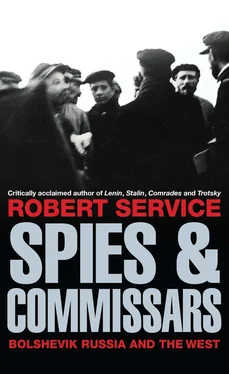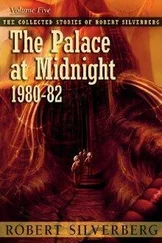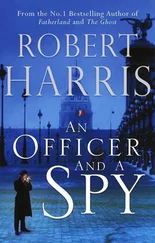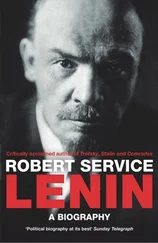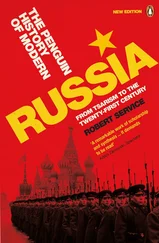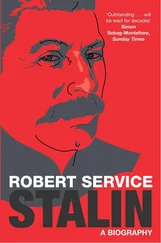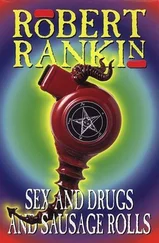The scheme for a Latvian coup was not wholly outlandish. For a time, just tens of thousands of Czechs had tipped the balance in the war between Komuch and Sovnarkom. The Latvians occupied sensitive positions of power in Moscow, including the Kremlin itself. They could wreak havoc if they wanted. Of course, they would never get official permission to depart from Moscow. They would have to commandeer a train and probably use force. Soviet authorities would instruct stations on the Moscow–Murmansk line to obstruct their passage. The Red Army was unlikely to be allowed to stand still in the Volga region while the British expanded their influence. Lockhart had at the very least started a conspiracy to disrupt Soviet rule. There was bound to be fighting in Moscow — and he must have hoped that if things went well, his Anglo-Latvian initiative might somehow bring about the downfall of Sovnarkom. There was no other reason for causing mayhem in Moscow.
Lockhart met Berzin again on 15 August. This time Sidney Reilly and Fernand Grenard, the French consul-general, were present. 49Two days later Lockhart gave an affidavit to Latvian rifleman Jan Buikis enabling him to talk to British intelligence officials in Petrograd. 50The plot was thickening as Lockhart sought to lay the groundwork for the coming action. He was aware that the Soviet leadership’s anger at the recent British occupation made his own situation in Moscow precarious. Thinking that the Foreign Office might recall him to London at any moment, he transferred the overseeing of the Latvian arrangement to Reilly. Berzin said that three or four million rubles would be needed to see things through to a successful conclusion. Reilly was given 700,000 rubles to hand over to the Latvians as a first instalment; Lockhart subsequently passed on another 700,000 rubles. Lockhart and Reilly saw each other as rarely as possibly. Both of them had complete trust in Berzin. 51
Only at this juncture — according to both Lockhart’s and Hill’s memoirs — was the plot expanded to involve a coup d’état . Although they wrote admiringly about Reilly, they held him personally responsible for this changed objective; and Reilly was dead by the time their books appeared. They claimed that the new idea was for the Latvian military units guarding the Kremlin precinct to surprise the communist leaders at gunpoint in the course of a Sovnarkom session. Hill maintained that there was to have been no killing because Reilly sensed that the Russian people would object to a foreign force cutting down Russia’s government. Reilly supposedly wanted to parade the communist leaders through the streets of Moscow with the aim of humiliating them and showing how vulnerable they were. Lenin and Trotsky would be stripped of their ‘nether garments’ and forced to appear in their shirts alone. 52It is an entertaining but implausible story, and even Hill subsequently claimed to have thought the plan impractical. The idea that Reilly thought he would secure success by removing the underwear of the Soviet leadership is hard to believe. Hill, like Lockhart, knew he was breaking the rules by publishing a personal account of secret intelligence work and probably judged it wise to tenderize his account of British subversive activity in August 1918. Or maybe Hill and Lockhart simply wanted to clear their own names in connection with a conspiracy that went badly wrong.
At any rate a Cheka secret report, collated in 1920 by Yakov Peters from testimonies and interrogations two years earlier, told a very different story: Lenin and Trotsky were to be shot after capture. 53Peters was not writing for general publication but for distribution inside the supreme communist leadership. And indeed even if the Cheka report was a fiction and the account given by Lockhart and Hill was true, there can be no doubt that the outcome of the conspiracy would inevitably have been a violent one. Lockhart had authored a scheme which, however it was activated, would soak Moscow in blood. The Western Allies sensed the coming of victory in northern France. The British Foreign Office and Secret Service Bureau led the way in plotting to prepare a future for Russia free from Bolshevik rule. All Europe including its Russian extremity was to be transformed.
Robert Bruce Lockhart’s fingers were still wrapped around the Latvian conspiracy on 25 August 1918 when he took Sidney Reilly to the US consulate to brief the Americans and French about his plans. The acting consul-general DeWitt Clinton Poole Jr and Xenophon Kalamatiano were present together with the French consul-general Fernand Grenard and the Figaro correspondent René Marchand. 1Reilly later claimed to have felt doubts about whether he had been sensible in going to such a meeting. 2The conversation covered progress with the Latvians and reportedly dwelt on the desirability of co-ordinating Allied undercover activities. 3But Marchand, who had once regretted the fall of Kerenski and the Provisional Government, felt repelled by the conspiracy being set up by Lockhart and Reilly, and he took the silence of Poole and Grenard as proof that they condoned it. He wrote an angry letter to President Poincaré denouncing what agents of the Western Allies were getting up to — he rightly assumed that Poincaré was in the dark about the plot. 4Of much greater importance was the fact that he also went to the communist authorities and told them what he had heard in the American consulate. Marchand became a turncoat. 5
The Frenchman assumed that he was the first to inform the Chekists, but in fact they learned of the plot several days earlier. Colonel Berzin told Yakov Peters (another Latvian, as it happened) as soon as Lockhart had made his proposition. Peters consulted Dzerzhinski and the decision was taken to ask Berzin to play along with the British. They hoped that this would lead them to all the British, Russian and Latvian conspirators as well as supply a pile of compromising information on Allied diplomats. 6
The Lockhart plot became an open secret at the top of the communist leadership. Ivy Litvinov would later recall:
Very interesting about Lockhart. They had Lockhart in — they arrested him, you know, and nobody here knew why. Oh, yes, being implicated in a plot with White Russians to seize Lenin or something like that. All true but it was all provocation. Yes, Maxime told me. Our people employed, I mean the Soviet people — they were not called Soviet people then — I forget… A certain agent provocateur — I am putting it very primitively, you know — said would you like to take part in a plot… and he said ‘Yes, with pleasure.’ Then they flung him into prison. That’s never been written, you know. 7
Allied officials in Russia had seriously underestimated the Bolshevik party’s hard-won expertise in methods of police infiltration and provocation. They had also overrated their own cleverness. In reality they had set a trap whereby they would ensnare themselves rather than the Bolsheviks.
Two events on 30 August induced the Cheka to abandon its stealthy approach. The first was the assassination of Petrograd’s leading Chekist Moisei Uritski by anti-Bolshevik socialist Leonid Kanegisser. Later in the day Lenin gave a couple of stirring speeches to factory workers and was returning to his limousine at the Mikhelson factory when shots were fired at him. Badly wounded, he was hurried to the Kremlin for emergency treatment. For some time it was uncertain whether he would survive. Dora Kaplan, a woman loitering outside the factory for no good reason, was arrested as the culprit and summarily executed. Since she was extremely myopic and mentally very confused, she had almost certainly not committed the crime. But the Bolshevik leaders wanted to show that they meant business. Yakov Sverdlov took command of both the party and the government. A Red terror was proclaimed.
Читать дальше
